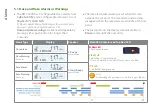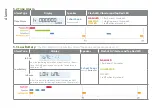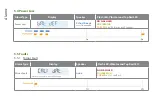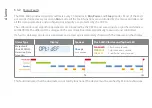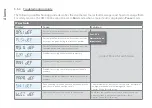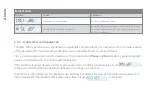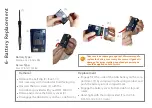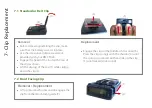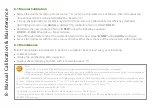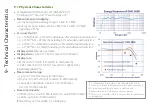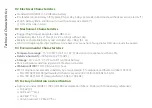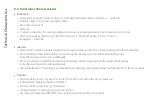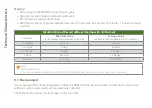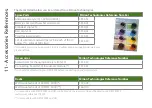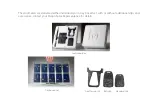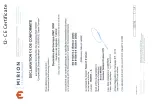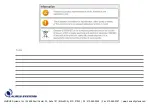
-25-
8- M
anual C
alibr
ation & M
ain
tenanc
e
8.1 Manual Calibration
Expose the dosimeter with a gamma source
137
Cs (note) to a minimum dose of 500 µSv, that is the expected
dose and read on the dosimeter display the "Read Dose."
Look up the calibration factor efficiency Hp(10) (G2 protocol) or Calibration factor efficiency multiplier
Hp(10)(G3 protocol) using
dmc
User
software. This calibration factor is called "
K OLD
".
Determine the new calibration factor "
K NEW
" using the following equation:
K NEW
=
K OLD
x Read dose / Expected dose.
Turn off the dosimeter and set the calibration factor to the new value "
K NEW
" using
dmc
User
software.
Expose the dosimeter with the same source and check that the response of the dosimeter is within the limit.
8.2 Maintenance
Mirion Technologies recommends to perform a complete check at least every year, including:
Calibration check
Display, top and flashing LEDs inspection
Speaker check (turn On your DMC with rate warning set at "0")
Note:
The DMC 3000 is provided with an initial factory calibration traceable to international reference standards.
Mirion recommends an annual calibration check; although the re-calibration interval may be determined by the customer based on
service environment, frequency of use and requirements defined by local regulations.
The DMC 3000 is equipped with 2 detectors, one for high energy gamma and >50 kev X-ray and a second detector for low energy X-ray down
to 15 kev. Calibration with a Gamma source (
137
Cs or
60
Co) or Gamma and low energy X-ray may be considered based on service environment.
Mirion Technologies can provide a calibration check at 3 points of energy (16 keV X-rays,
241
Am and
137
Cs)
and
60
Co on request, in accordance with ISO/IEC 17025.
- In G3 protocol the calibration factor efficiency multiplier Hp(10) is set at 1.00 in factory.
- Decreasing in G2 protocol the calibration factor efficiency Hp(10) or calibration factor efficiency multiplier Hp(10) in G3 protocol will increase
the DMC 3000 response.







